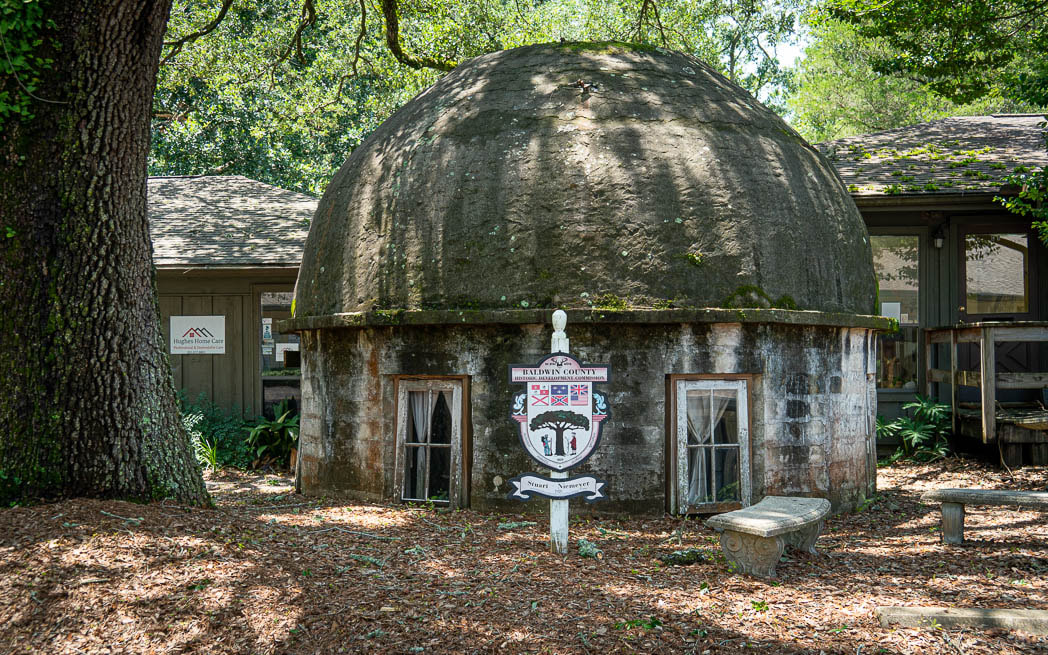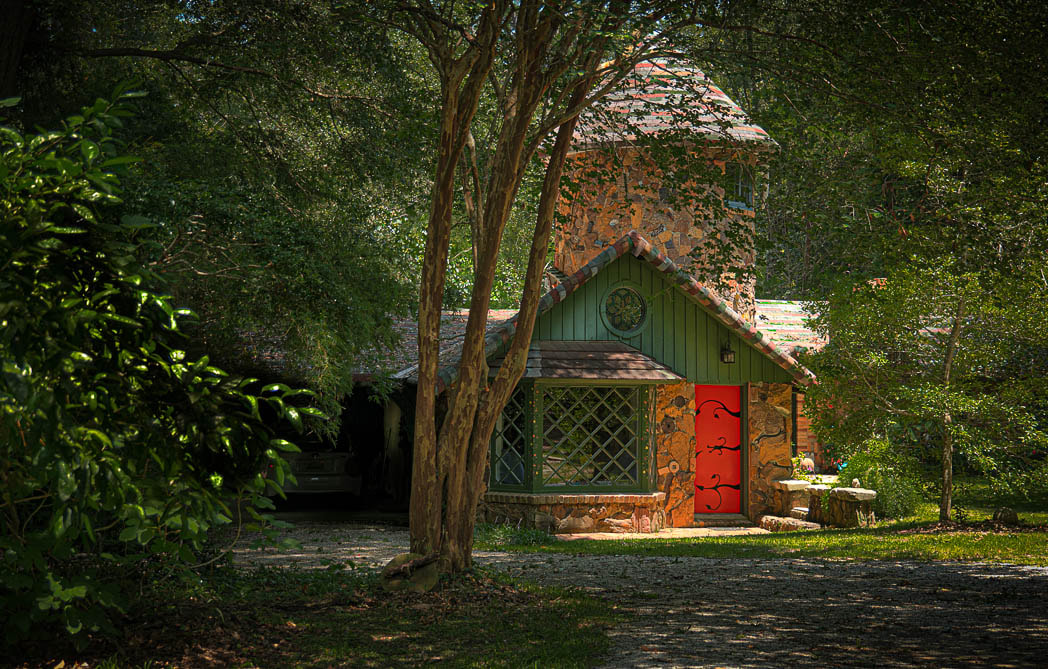In 1923, at the age of 65, Henry Stuart from Nampa, Idaho, was diagnosed with tuberculosis. They still called it “consumption” in those days, and the typical advice from doctors was to move to a better climate.
Since Alabama was warmer than Idaho, Stuart packed up, bought ten acres of wooded land in Baldwin County sight unseen, and moved the 2,500 miles along the routes of the day.
Once Stuart got to Fairhope, Alabama, he built himself a simple, round hurricane-resistant home, only 14 feet in diameter, fashioned from bricks and hand-made concrete blocks. The floor level of the house was set 16 inches below the surrounding land for a more constant intetior temperature.
By 1925 the little hut was just about finished, and Stuart dubbed it “Tolstoy Park” (Stuart was aware that Russian author Leo Tolstoy had been virtually a wandering hermit during the time just before his death). Stuart used a ladder to access his “bed”, a rope-strung hammock high above floor level. Raed More Here
From its humble beginnings on February 1, 1940 as the keel was laid at the Norfolk Navy Yard in Portsmouth, Virginia, Battleship USS ALABAMA (BB-60) has had a remarkable career. She began her World War II adventures in the North Atlantic in 1943, then later that year, went to the South Pacific seas. She ended up in Mobile, Alabama as a National Historic Landmark and memorial to millions.
During the American Revolutionary War, the Spanish captured Mobile and retained it by the terms of the Treaty of Paris in 1783.
Mobile first became a part of the United States in 1813, when it was captured by American forces and added to the Mississippi Territory, then later re-zoned into the Alabama Territory in August 1817. Credit Wiki











